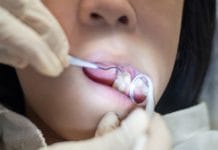I am 100% not joking… Candida has been used as a baby name. I know right?! I stumbled upon this fun fact when I was looking for other names for yeast, fungus, and candida. The name Candida has been shared by a German artist, a keyboardist, and a filmmaker (who made the kind of films you wouldn’t want your child to watch). Also, Tony Orlando had a song named “Candida,” and there was a play and a film with the same title. Oh, the jokes I could make! I read that those blessed kids with the Candida name ended up getting nicknames like Candy, the alternate spelling Candi and Didi – looky there! Could P-Diddy be a Candida in disguise?
Candida comes from the Latin word candidus, meaning clear and white. Wait, what? Clear you say? Candida is found in up to 70% or more of the population and is a microbe that lives in the body as a fungus or yeast.1 Yeast is considered the normal healthy form, and the fungus is the pathogenic problem. Candida can switch back and forth, depending upon the environment.
Under normal circumstances, candida lives in our intestinal tract along with at least 160 other species of bacteria and yeast. This is what is known as our microbiome, which is getting so much press recently. The number of cells in our microbiome (one hundred trillion) vastly outnumbers our human cells (ten trillion). We may be outnumbered, but a healthy microbiome is vital to our survival and constitutes as much as 80% of our immune system.
Out of Control
Only when candida grows beyond control does it pose a toxic threat. You want to minimize the bad yeast, keep it in balance, and maximize the good yeast and probiotics. Some foods that are considered candida fighting are coconut oil, garlic, onion, ginger, olive oil, pumpkin seeds, cinnamon, and turmeric, lemon and lime juice and bone broth. I wonder if this was the origin of patients asking about swishing with coconut oil?
As defined, candidiasis is the systematic overgrowth of the naturally occurring yeast called candida albicans. Candidiasis is often accompanied by nutritional deficiencies such as vitamin B6, magnesium, and essential fatty acids. There is probably no difference between candida albicans and candida because most people when they talk about candida or yeast infections, talk about the organism, Candida albicans. There are about 19 types of candida that commonly affect humans, but the top five are C. albicans, Candida krusei, Candida parapsilosis, Candida glabrata, and Candida tropicalis.
C. Albicans is the most common cause of fungal infections in humans, as well as the most extensively studied fungal pathogen that affects people. C. Albicans is currently ranked the third most commonly isolated bloodstream pathogen in hospitalized patients, with a mortality rate of 40-50%. Immunocompromised individuals, such as those with cancer or HIV infection, are often the most susceptible.
Back before WWII, candida overgrowth was rare. And then, the introduction of antibiotics shifted the internal environment that favors the change to the fungal form. The U.S. Centers for Disease Control and Prevention (CDC) estimates that half of the antibiotic prescriptions are inappropriate. They have tried to get a handle on overprescribing because it can cause a multitude of issues, including Clostridium difficile infection (C-diff), allergies, anaphylaxis, and asthmatic reactions. The dental industry and medical professions have been warned about the risks of overprescribing antibiotics.2
Symptoms of candida overgrowth are oral thrush, which presents as white bumpy patches on the tongue, inner cheeks, gingiva, and in the throat. Thrush can also be associated with redness or soreness of the tongue and mouth. A study by Mayo Clinic found that of 210 individuals with chronic sinus infections, 96% had fungi in their mucus.3 Fatigue and tiredness are also symptoms, but in this day and age, it would be very difficult to differentiate if the cause was a fungal infection or just everyday life.
Why all this talk about yeast? New research shows that the fungus can enter the brain, triggering an inflammatory response and impair memory in mice. Importantly, the infection leads to the formation of abnormal structures in the brain, and these share similarities with amyloid plaques – a hallmark of Alzheimer’s disease (AD).4,5
The blood-brain barrier is a mechanism that protects the brain from pathogens that may exist in the blood. The barrier separates the brain’s capillaries, or blood vessels, from the brain cells and tissue. C. Albicans does cross the blood-brain barrier and affect the brain’s immune cells.
When the yeast enters the brain, it triggers an immune response from the microglia cells, our resident immune brigade, that lead to the capture of the yeasts. This is what forms the toxic brain plaques that characterize AD. When testing the mice, they showed significant spatial memory loss.
Who are at higher risk?
Our diabetic patients have a higher incidence of fungal candida infections, and candida conversely has been linked to the development of diabetes. The inability to balance and regulate blood sugar imbalances is often related to two of the most common causative factors found in both candida and AD-inflammation and mitochondrial dysfunction. Many diabetics have brain changes that are hallmarks of AD and dementia. Higher blood sugar levels are often found in patients with Alzheimer’s. Diabetics lose gray matter more than those who do not suffer from diabetes, and that gray matter loss is a contributing cause of AD.6,7
Inflammation is a factor in most if not all diseases and conditions and is especially true of candida and AD. Candida drives inflammation in the body, and inflammation plays an important role in AD pathogenesis. Inflammatory cytokines such as IL6 TNF-a, IL-1B, TGF-B, IL-12, and IL-18 are found in candida. They are present in AD as well. If candida drives the inflammatory cytokines that are present in candida, could candida be causing AD? There are many possibilities involving candida and AD.
“The possibility that AD is a fungal disease, or that fungal infection is a risk factor for the disease, opens new perspectives for effective therapy for these patients. The present findings demonstrate that fungi can be detected in brain tissue from different regions of the AD.”5
Reducing inflammation is a primary goal for everyone seeking greater health and recovering from life’s challenges. We, as valuable health-care providers, can help our patients live a better, longer life. We should diligently look for any symptoms of yeast overgrowth in the mouth and focus on treating them and not just letting it go.
Our senior population needs us with their dentures and partials, our sleep patients with their mandibular advancement devices, and we can’t forget orthodontic retainers that are teeming with bacterial and fungal overgrowths. We can perhaps help in the prevention of Alzheimer’s disease and reducing overall inflammation in our patients. We are fortunate in dentistry to have the ability to test specifically for periodontal pathogens and candida with a simple salivary test. This is an excellent opportunity for us to once again improve and change lives.
Now Listen to the Today’s RDH Dental Hygiene Podcast Below:
References
- Wächtler, B., Citiulo, F., Jablonowski, N., Förster, S., Dalle, F., Schaller, M. Candida albicans-Epithelial Interactions: Dissecting the Roles of Active Penetration, Induced Endocytosis and Host Factors on the Infection Process. PLoS ONE. 2012; 7(5): e36952. DOI: https://doi.org/10.1371/journal.pone.003695. Retrieved from https://europepmc.org/articles/PMC3351431.
- Llor, C., Bjerrum, L. Antimicrobial resistance: risk associated with antibiotic overuse and initiatives to reduce the problem.Ther Adv Drug Saf. 2014; 5(6): 229–241. DOI: 10.1177/2042098614554919. Retrieved from https://www.ncbi.nlm.nih.gov/pmc/articles/PMC4232501/.
- Mayo Clinic Study Implicates Fungus as Cause Of Chronic Sinusitis. ScienceDaily. 10 September 1999. Retrieved from https://www.sciencedaily.com/releases/1999/09/990910080344.htm.
- Wu, Y., Du, S., Johnson, J.L. et al. Microglia and amyloid precursor protein coordinate control of transient Candida cerebritis with memory deficits. Nat Commun. 2019; 10(58). DOI: 10.1038/s41467-018-07991-4. Retrieved from https://www.nature.com/articles/s41467-018-07991-4.
- Pisa, D., Alonso, R., Rábano, A., Rodal, I., Carrasco, L.. Different Brain Regions are Infected with Fungi in Alzheimer’s Disease. Sci Rep. 2015; 5: 15015. DOI: 10.1038/srep15015 https://www.ncbi.nlm.nih.gov/pmc/articles/PMC4606562/.
- Moheet, A., Mangia, S., Seaquist, E.R.. Impact of diabetes on cognitive function and brain structure. Ann N Y Acad Sci. 2015; 1353: 60–71. DOI: 10.1111/nyas.12807. Retrieved from https://www.ncbi.nlm.nih.gov/pmc/articles/PMC4837888/.
- Thompson, P.M. Hayashi, K.M., de Zubicaray, G., et al. Dynamics of Gray Matter Loss in Alzheimer’s Disease. Toga Journal of Neuroscience. 2003; 23(3): 994-1005. DOI: 10.1523/JNEUROSCI.23-03-00994.2003. Retrieved from https://www.jneurosci.org/content/23/3/994.










